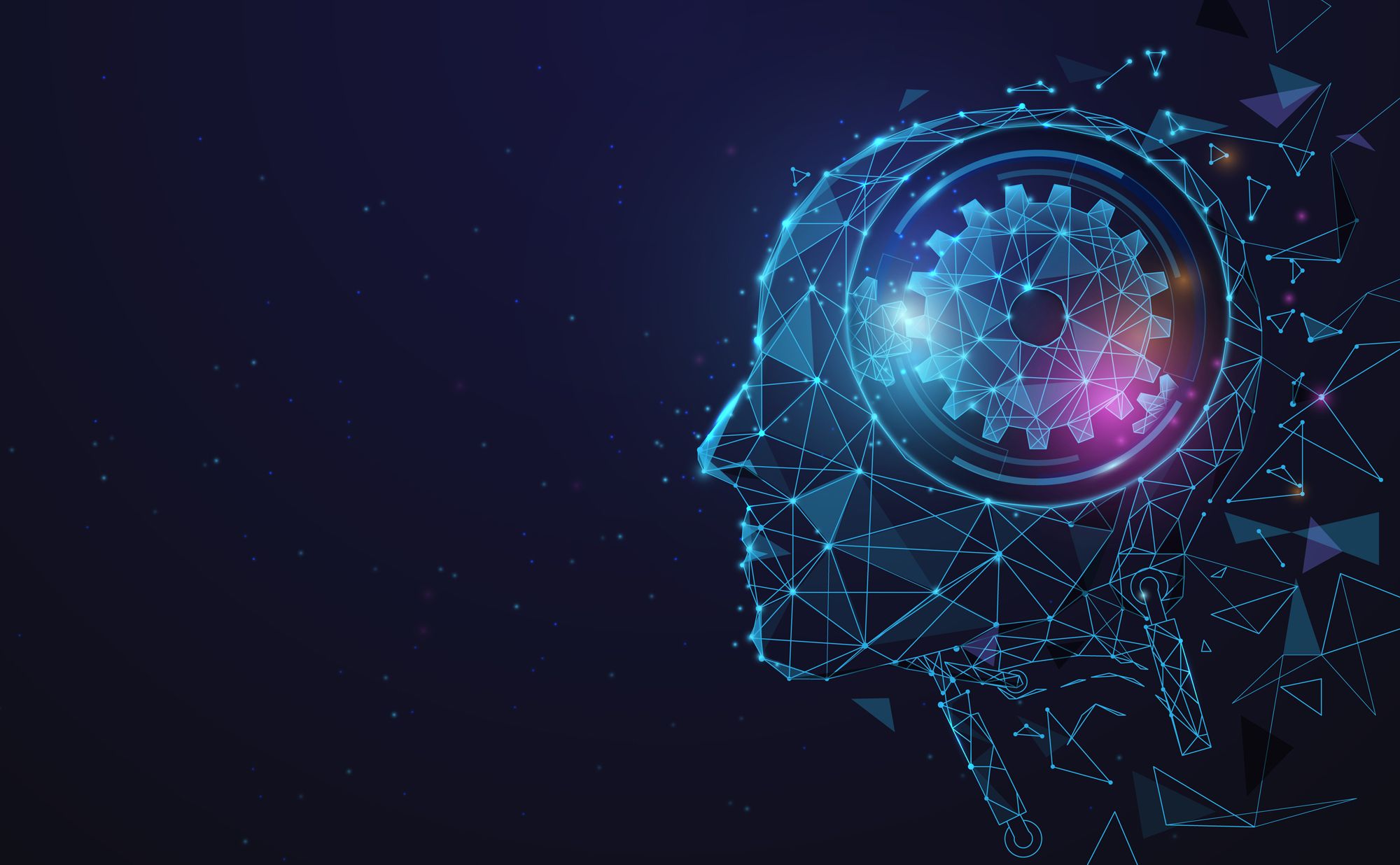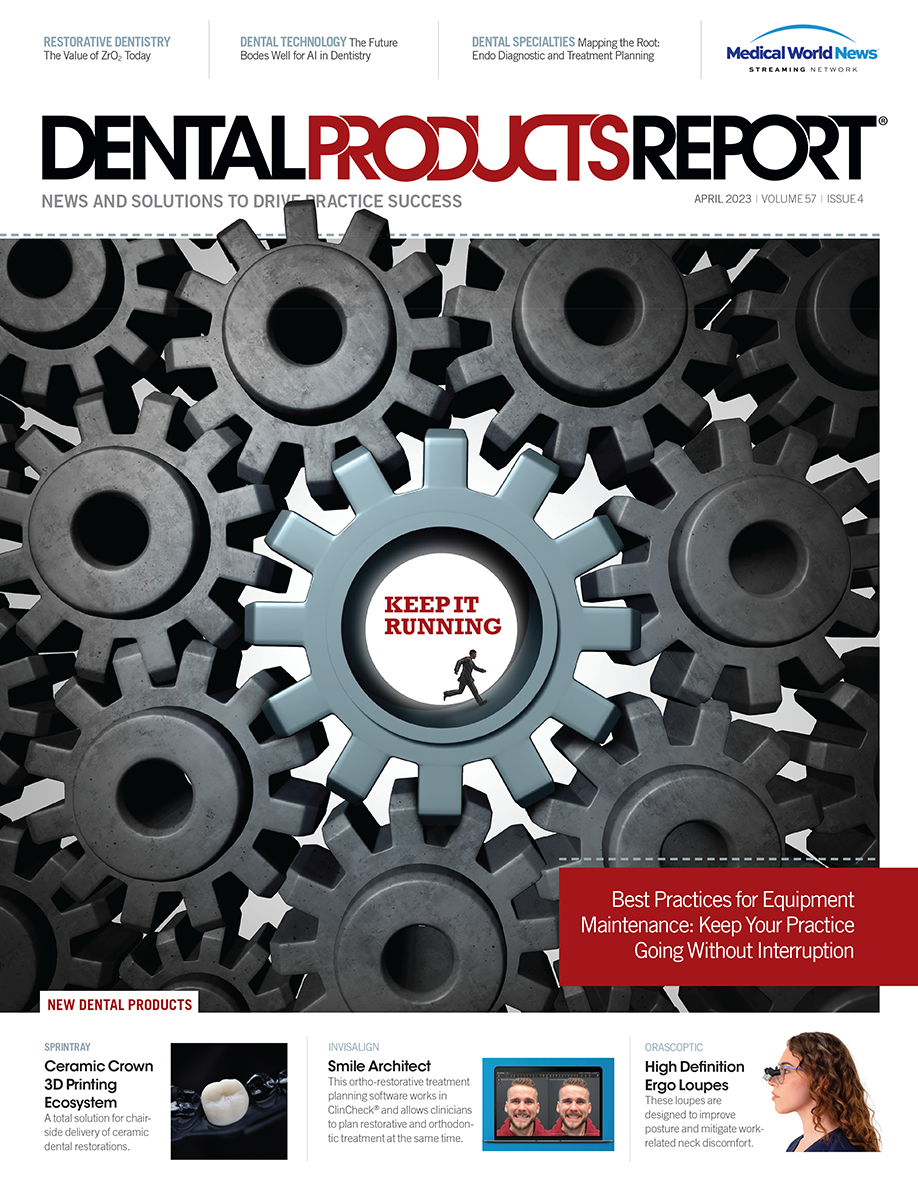The Future Bodes Well for Artificial Intelligence in Dentistry
Artificial intelligence has already changed the dental practice in ways that improve the patient and clinician experience.
The Future Bodes Well for Artificial Intelligence in Dentistry

My entire life, I’ve heard those older than me comment on how fast time passes. That’s an interesting concept. It’s a different slant on the theory of relativity. I humorously refer to it as “the theory of life span relativity.” Einstein’s theory of relativity states that as an object approaches the speed of light, time slows down. But please don’t ask me to show you the math.
The theory of life span relativity is a little different. It shows that the life span of an individual is a finite piece of time, with a beginning and an end. It states that the closer the individual is to the finite end of that time line, the faster time passes.
Think about that for a moment. It seems like I’m onto something, doesn’t it?
I bring this up because I have been practicing dentistry for a while now. That means I have seen quite a few things over my career. For this month’s column, I wanted to start out by mentioning a device from KaVo called the DIAGNOdent™.
Most of you reading this know what I’m talking about, but just in case you don’t, here is a brief history. The DIAGNOdent came out in 2001. It was a small, battery-operated device with a small handpiece attached by a cord to a box. It functioned like a digital explorer. A mild red laser beam (similar to the ones found in laser pointers) came out of the handpiece. The handpiece had a small tip on it that allowed the user to contact the tooth and lightly move it around the occlusal surface.
The idea was that when the red laser struck an area of caries, that area would fluoresce, a sensor in the handpiece would measure that fluorescence, and the DIAGNOdent would emit an audible tone. There was more to it than that, but that is the basic concept.
When we introduced the DIAGNOdent into our practice back in 2001, the patients were really impressed. We explained that it allowed us to find areas of decay that were just starting—so small the explorer couldn’t find them yet—and restore them without anesthetic. My regular patients were thrilled.
The weird thing was that new patients had a hard time with it. Here is a scenario: A new patient came in who had seen their previous dentist for 5 years. In all that time, they were told they had 0 cavities. However, when they visited my office, a little box that beeps told them they had 3 cavities. The patient had no track record with us. We had not yet developed a baseline of trust with this patient. This happened a couple of times, so we changed our office protocol and our communication with new patients, which helped considerably.
Visual Codiagnosis
The problem with the DIAGNOdent was its lack of a visual component. The device worked and was very accurate in assessing the presence of caries. But the lack of visualization was its Achilles’ heel.
Human beings are visual creatures. We rely on our eyes for a huge percentage of our environmental input. Findings from multiple studies have determined that we perceive more than 80% of our environment through our eyes. There’s a reason for the old expression “Seeing is believing.” I’m also a big fan of “I hear and I forget. I see and I remember. I do and I understand.”
When you have established trust with a patient, they are inclined to believe what you say. However, before you have established that trust, it can be much more difficult.
One of the best things that technology has provided to us in the time I’ve been in practice is the patient monitor. When the doctor, hygienist, or assistant can open an image on a monitor that is positioned exactly where it needs to be for ideal viewing, a whole new world opens for the patient.
My father told me early in my career that “better-informed patients make better decisions about their care,” and that was a lesson I have never forgotten. It is especially true when you can provide education and information in the way that the human brain is best equipped to assimilate it.
Bringing in Artificial Intelligence
As regular readers of this column know, in January we brought the dental artificial intelligence (AI) company Pearl into our office. Their Second Opinion® system was the best one I had worked with.
Although the number of solo practitioners may have dropped in recent years, that’s not to say there are no solo practices out there. There are definite advantages to practicing alone, but receiving a consensus is not one of them. Fifteen years ago, I took in a partner, and the practice is now supporting 3 full-time doctors. There are many advantages to having more than 1 doctor, but one of the biggest is being able to obtain a second opinion right then and there. However, getting 2 dentists to agree on anything is next to impossible.
Because of my position here at Dental Products Report®, I get a chance to see and work with some amazing products before they reach the market. I have been working with different dental AI systems in beta versions for the past several years. One of the things I quickly learned was that I loved having access to a completely impartial and objective party that provided opinions for me.
Some of the systems I work with went away because of lack of funding. Every time that happened, I was forced to go stop using them, which I hated. Dental AI is one of those products where you start by thinking of it as a luxury, but it soon becomes a necessity.
Pearl has taken AI to the next level in the office. A smooth and easy-to-use interface makes access to world-class AI as easy as clicking the mouse in a browser.
Incorporating AI Into the Codiagnosis Mix
Although I am a huge fan of cloud-based software as the future of dentistry, I am still on a client/server system in our office. If I were a young doctor, I’d be migrating to the cloud. But alas, I am no longer a young doctor despite what my inner voice keeps telling me. Because of that, I will let the next owner of the practice make the decision on software.
Throughout the day, we are constantly taking radiographs. Those radiographs are stored on the server inside of the practice management system. That system doesn’t matter to Pearl, which is software agnostic. Every 3 to 5 minutes, Pearl looks at our system, uploads recently taken radiographs to its servers in the cloud in a HIPAA-secure manner, and then runs them through Second Opinion.
We have a tab open in Google Chrome on every one of our workstations, and that tab gives us access to the AI-enhanced radiographs. When new images are uploaded, Pearl refreshes the window, and we can see the patient’s name. Clicking on the name opens a page with the images. Of course, those images have been run through Pearl’s AI and are now annotated with colors and measurements that indicate areas that should be evaluated further by the doctor. We simply move the tab containing the images to the patient monitor, and then we can easily explain what the system sees and what it means.
Here is a typical story from my practice. This happens multiple times a week. I’m telling this story not because it makes me look good but because if it happens to me, I’m confident it will happen to you and your office as well!
I was called to do a hygiene recare examination. Our protocol is for the hygiene team to gather all pertinent data and do an examination first. The doctor is then notified that a check can be done. The benefit of this method is that the doctor can do the examination when they have time, be it before, during, or after prophylaxis. That way, patients are not kept waiting on those days that the hygienist is done and the doctor happens to be unavailable for a few minutes. It simply makes the office flow better. This frequently gives the doctor a chance to review the data prior to seeing the patient, meaning radiographs, images, periodontal probing, etc, have already been reviewed.
So I went to do the examination, and the hygienist told me she had seen a shadow on the distal of tooth 13 but needed me to make the diagnosis. I told her I had seen it as well, saying, “I looked at it with the AI system, and it saw it too.”
The patient looked at me wide-eyed and said, “Wait a minute. You’re using artificial intelligence to evaluate my x-rays?” Obviously, we had not yet had a chance to get the Pearl imaging on the patient monitor yet.
I assured him that this was indeed the case. I then moved the browser window to his monitor and explained what it all meant. The patient was ecstatic.
“Dr Flucke, this is the coolest thing I’ve seen in a long time, and this is exactly why I come here. You guys are always on the leading edge, and I know the care I get here is the best. I was talking to a coworker about this office the other day, and he said that you are not on our insurance plan. I told him it doesn’t make any difference. I told him to make an appointment and see why it’s worth it to come here.”
Other than a website, we don’t do any marketing. The amazing thing is that in these times, the technology markets itself.
The other tremendous thing about AI is that the system can confirm areas where you as the doctor may have doubts or find something you may have missed. Everything Pearl sees and indicates creates data. The more data you have, the better decisions you can make. The AI does not make the diagnosis any more than the radiograph does. You might see something indicated on the Pearl window and choose to monitor that spot until the next examination, but now you know it is there.
Wrapping Up
Our use of Pearl’s Second Opinion system has been eye-opening. I had enough previous exposure to AI to realize how important it was. What I didn’t expect was the tremendous response from patients when discussing that my findings are paired and enhanced by the AI.
Basically, my dad was right. Even though he owned a printing company and was not a doctor, he knew that better-informed patients make better decisions about their care. One thing he failed to mention is that better-informed doctors make better decisions about their patients, leading to better care that results in better long-term outcomes. The year of AI in dentistry is already 25% in the history books, but it’s only going to get better from here!
